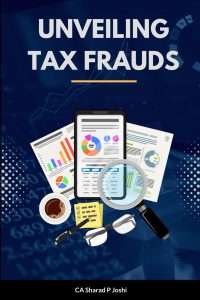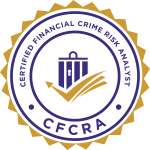Financial crimes are now affecting the common man’s life despite financial institutions being known as the ultimate losers in such events. Banks, NBFCs, Cooperative banks, Insurance companies, and Stock markets all face the heat of financial crimes.
In the fight against financial crimes, Indiaforensic is the oldest ally of the bankers. Indiaforensic offers a “Certified Financial Crime Risk Analyst” program for the entry level.
But let’s first understand what is a financial crime.
What are Financial Crimes?
According to the forensic accounting manual of Indiaforensic, Financial Crime is an offense that is to money and its equivalence such as cheques, credit cards, shares, investments, etc.
Globally there are two types of crimes prominently observed in the financial sector. First is the crime which causes financial damage to a party involved in the transaction. This includes fraud, theft, or corruption.
Whereas the second type includes protecting the financial gains derived from causing damage to another party. This involves the laundering of criminal proceeds. This is however the biggest portion of the financial crimes and is 2-5% of the global GDP.
Types of financial crimes
Accordingly, every business in the financial services sector must know the potential threats they face and the measures they need to put in place to protect themselves from these events. Here are some of the different types of financial crimes.
Fraud
There is a variety of frauds taking place in the global financial systems. This includes but is not limited to cheque fraud, credit card fraud, mortgage fraud, bank fraud, and insurance fraud. Additionally, there are securities fraud, Insider trading scams, market manipulation, payment fraud, health care fraud, medical fraud, corporate fraud, etc;
You can also refer to the Guide on Frauds
Theft
There are different types of theft activities. Inventory thefts, cash thefts, and intellectual property thefts are the most common forms of thefts having a financial impact. As the technology evolves the impact of IP theft will have a significant impact on the forensic accounting domain.
Scams or confidence tricks
A scam is a dishonest plan of cheating multiple entities. Scams are generally large scale financial damages. Regulators calling customers to take out insurance or fake call centers shopping for credentials are all examples of scams.
Tax evasion
Throughout history, taxes have been a financial burden for the common man. While every taxpayer wants to save on taxes whenever possible, some become overly aggressive in their attempts to do so, which can lead to tax evasion. There are various forms of tax evasion, which fall into two categories: direct and indirect taxes.
 Direct taxes are levied on individuals’ income, such as personal income tax or corporate tax, while indirect taxes are charged on goods and services, such as value-added tax (VAT) or customs duty.
Direct taxes are levied on individuals’ income, such as personal income tax or corporate tax, while indirect taxes are charged on goods and services, such as value-added tax (VAT) or customs duty.
Tax evasion can be carried out through various methods, such as underreporting income, overclaiming deductions, or concealing assets. It is important to note that tax evasion is illegal and can result in penalties, fines, or even imprisonment. Riskpro Learning offers a specialized course Certified Tax Fraud Analyst. This is an in-depth course on tax avoidance, evasion and fraud. They have also published a book on Tax fraud. Unveiling Tax Frauds is available worldwide through Amazon.
Bribery
Bribery is nothing but offering, promising, giving, accepting, or soliciting an advantage as an inducement for an illegal action, unethical, or a breach of trust. Globally, the Foreign Corrupt Practices Act and the UK Bribery Act are the two most powerful pieces of legislation dealing with this financial crime. Individuals with political influence, such as government officials, may be able to use their status and influence to launder the proceeds of corrupt activities while avoiding AML controls.
Embezzlement
Embezzlement refers to the fraudulent or illegal appropriation of funds. An individual entrusted with the care or custody of funds belonging to another party, such as their employer or clients, may commit financial crimes like embezzlement. White-collar crime in a business setting is commonly associates with this type of financial crime.
This crime can be committed by individuals who hold positions of trust or authority, such as managers, executives, or employees. Embezzlement can occur through various means, including falsifying records, manipulating financial statements, or simply stealing cash or assets.
Identity theft
Money laundering
Changing the color of criminal money from activities like corruption, bribery, or terrorist financing to clean, white, and legitimate. Moreover, the money from crimes is introduced often in banks and then circulated through various bank accounts before the money leaves the system to be placed in the account of the end beneficiary.
Forgery and counterfeiting
This includes the production of counterfeit money and consumer goods. It is not only copying but also an imitation of a document, signature, or banknote.
Financial crimes may involve additional criminal activities, such as computer crime and elder abuse, and even violent crimes such as robbery, armed robbery, or murder. Individuals, companies, and cartels carry out fraud. Victims may include individuals, corporations, governments, and entire economies.
However, the most dangerous form of financial crime is terrorist financing. This causes damage not only financially but also to the human life. Moreover, identification detection and prevention of these financial crimes is the priority for the law enforcement agencies across the world.
Changing Dynamics of Financial Crimes
In addition to the above-mentioned activities of fraud, forgery, and cheating, there are many other sophisticated techniques. Some of these techniques are
- Collusion of bad actors with the bank employees
- Appointing Money Mules
- Using social engineering techniques such as phishing, smishing, or vishing.
Moreover, there are different establishments in the world combating fraud and money laundering. Financial Crimes Enforcement Network (FinCEN) in the United States, the Financial Conduct Authority (FCA) in the UK, the United Nations Office on Drugs and Crime, and the Federal Financial Supervisory Authority (BaFin) in Germany are some examples.
With the development of technology, methods of combating such criminal activities are evolving. With the developing regtech sector in recent years, solutions to combat financial crimes have increased. Anti Money Laundering (AML) regulations have become stricter and now the countries have to comply with the FATF standards. Non-compliance leads to the inclusion of the country in the grey list.
Training in Anti Financial Crimes
 Certified Financial Crime Risk Analysts have become the greatest weapon in the fight against financial crimes. The Certified Financial Crime Risk Analyst (CFCRA) helps people learn the basics of financial crime risks and how they connect to fraud. This certification enables participants to understand the essential aspects of risks related to financial crimes and how these risks are linked to fraudulent activities. This is a virtual classroom training. CAs and Professionals working in fraud, forensics, and risk teams prefer this course. If you are interested in pursuing this course, please write to us at education@indiaforensic.com or call us at +91-9766594401
Certified Financial Crime Risk Analysts have become the greatest weapon in the fight against financial crimes. The Certified Financial Crime Risk Analyst (CFCRA) helps people learn the basics of financial crime risks and how they connect to fraud. This certification enables participants to understand the essential aspects of risks related to financial crimes and how these risks are linked to fraudulent activities. This is a virtual classroom training. CAs and Professionals working in fraud, forensics, and risk teams prefer this course. If you are interested in pursuing this course, please write to us at education@indiaforensic.com or call us at +91-9766594401



